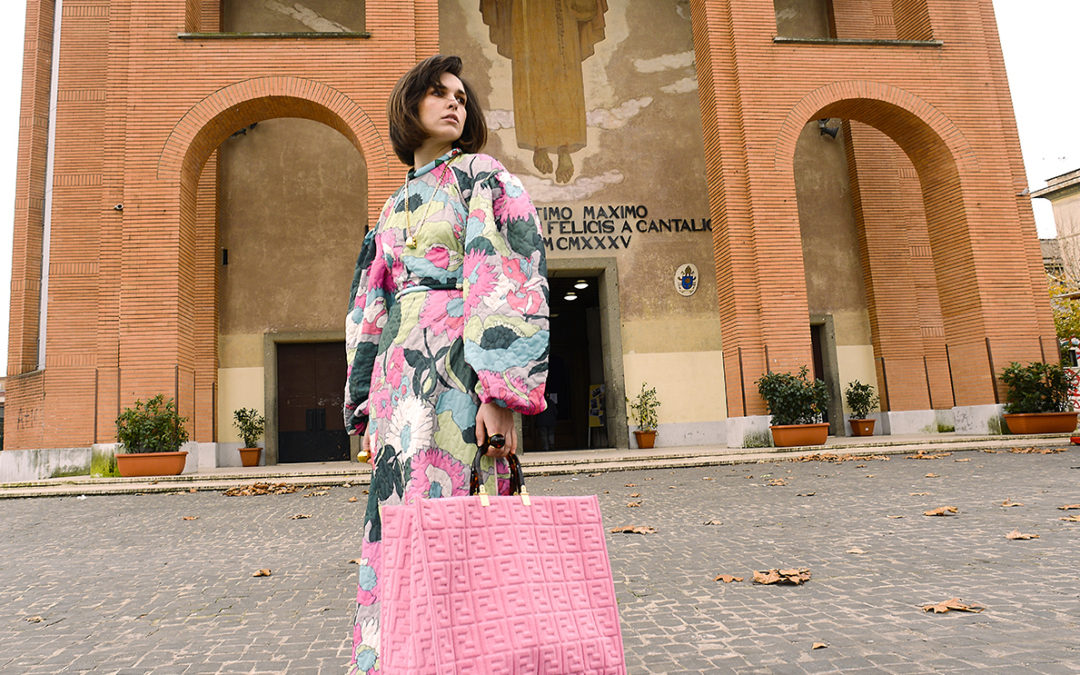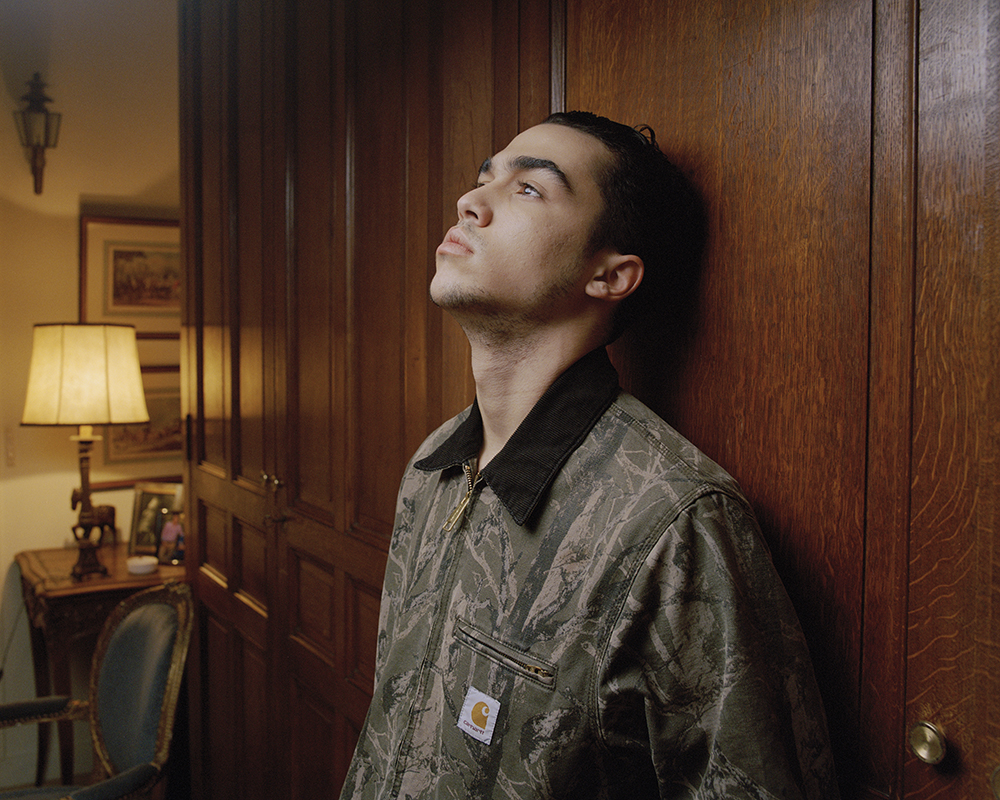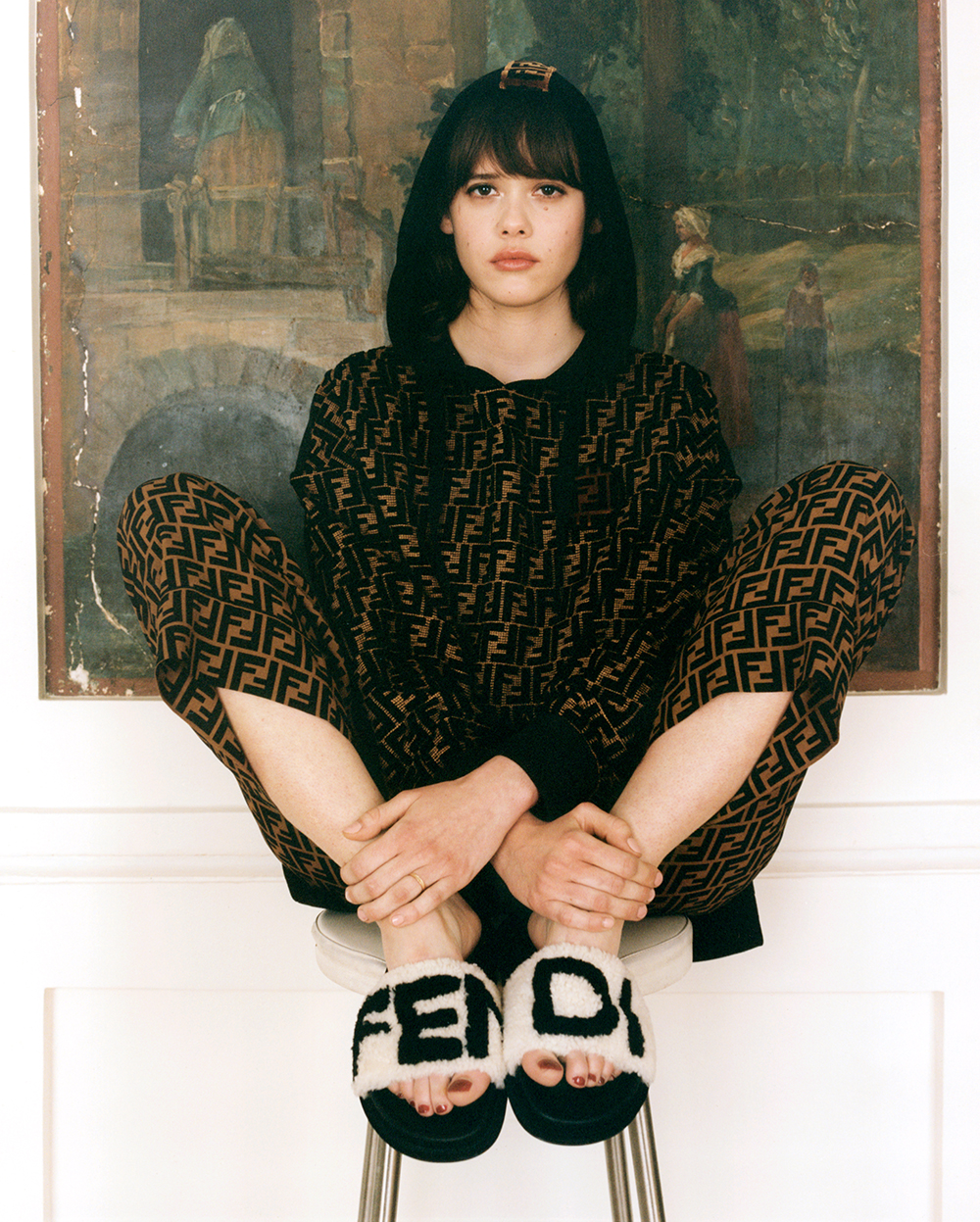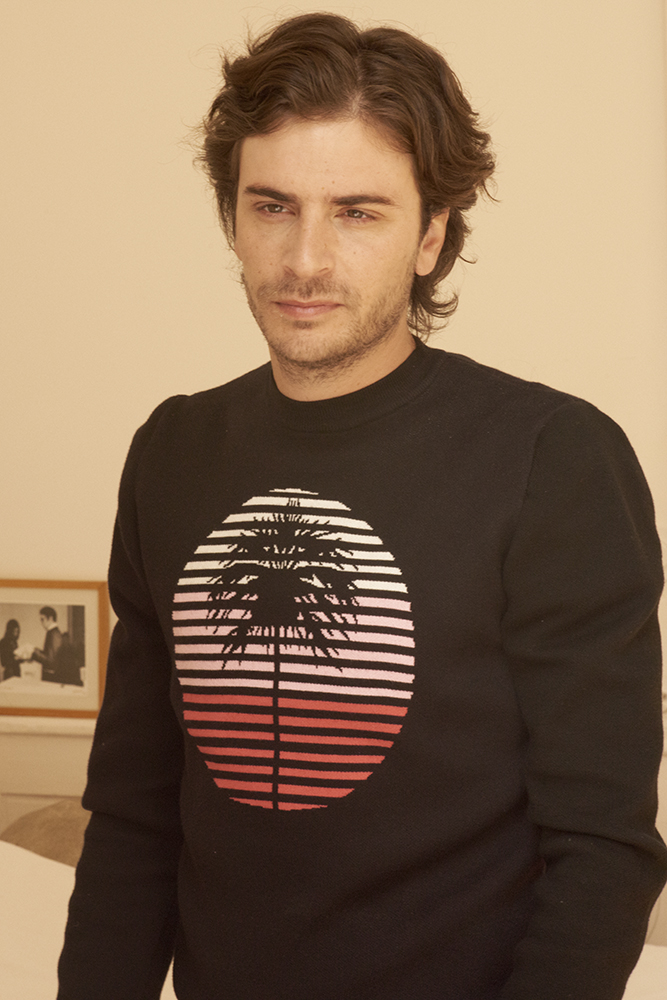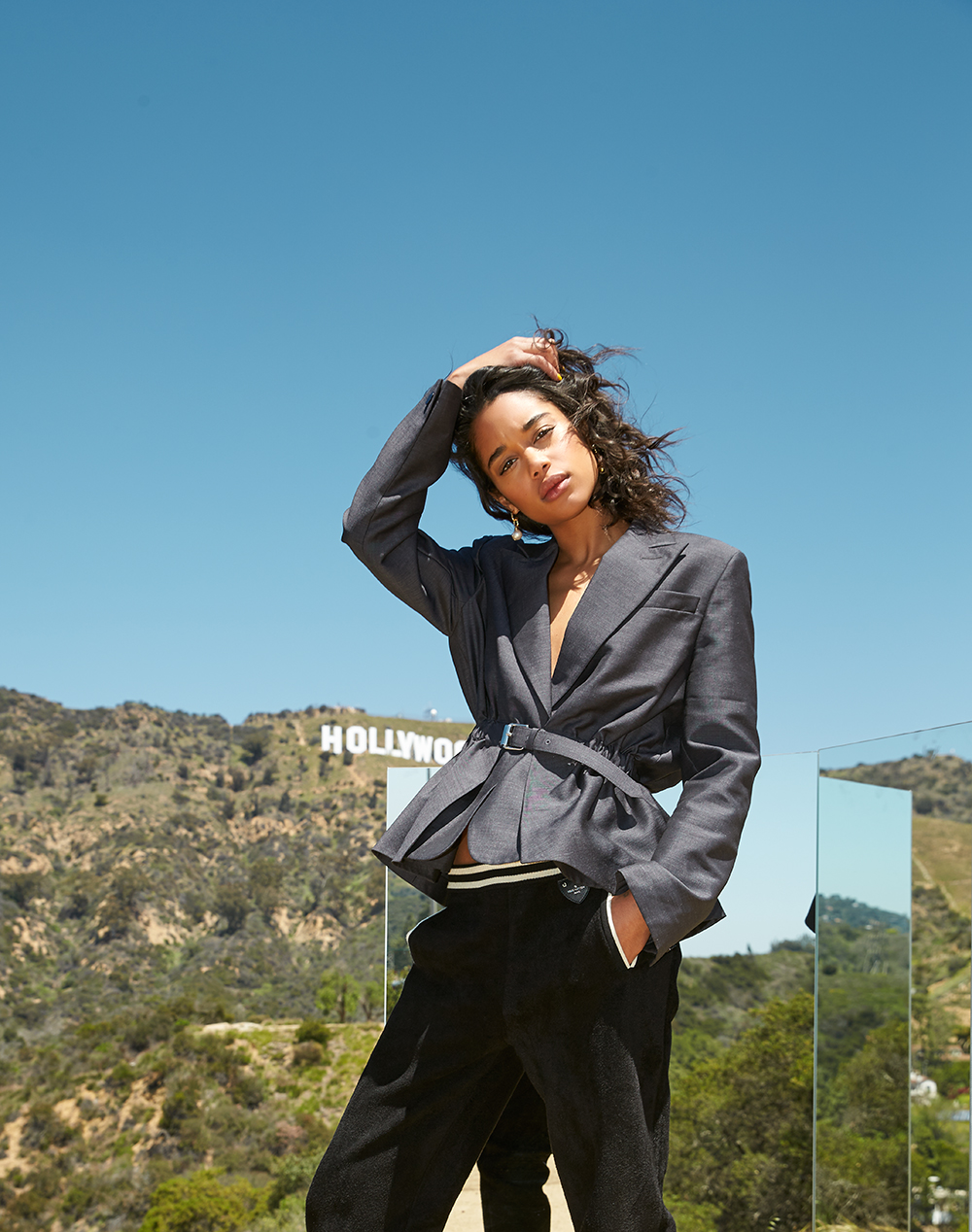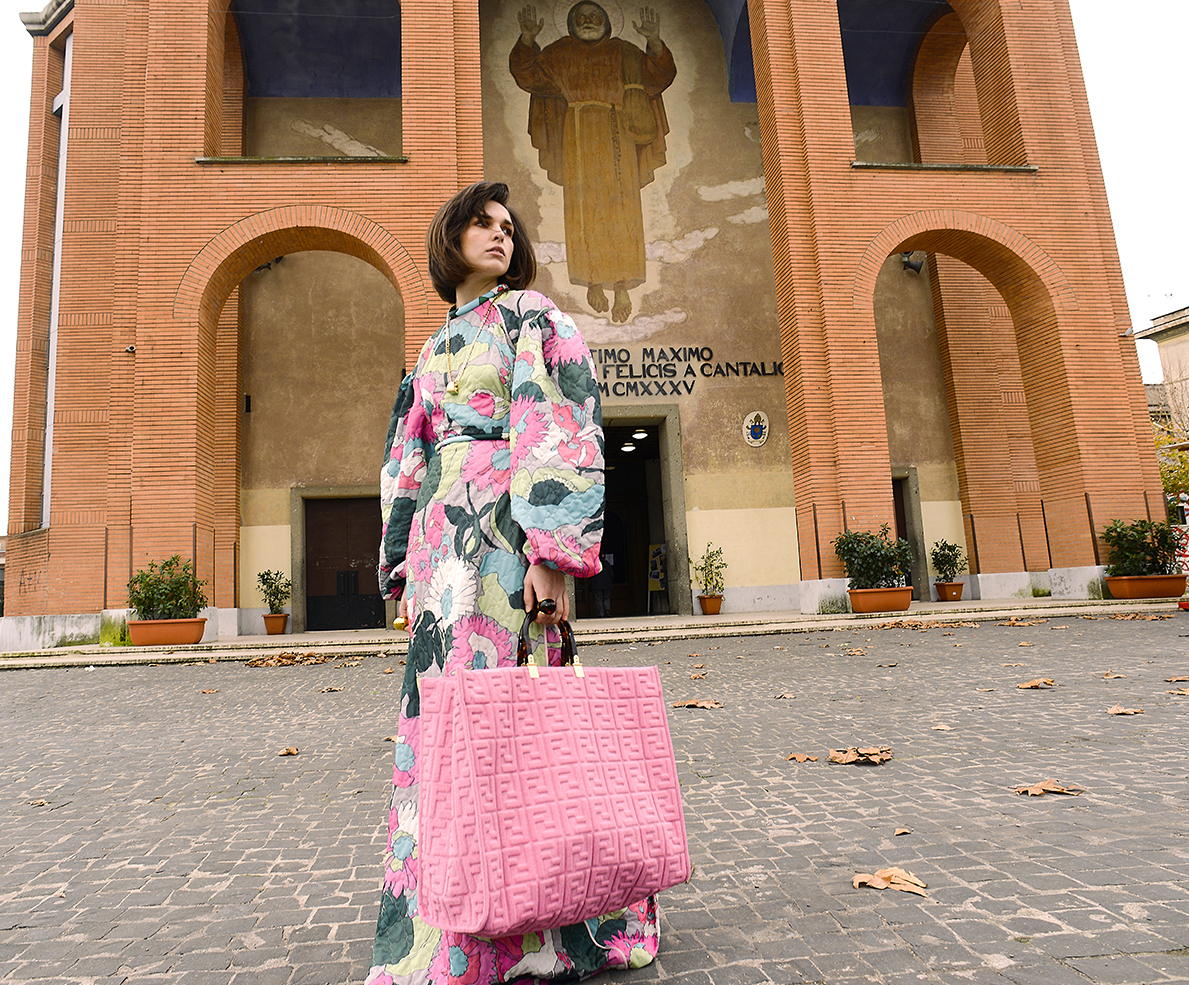
Long dress in quilted cotton and floral print, ff logo tote bag – Fendi / San Felice da Cantalice, Roma after Accatone by Pier Paolo Pasolini (1961)
A MEETING WITH SARA SERRAIOCCO
By Crash
Audiences first discovered her in Counterpart, a sci-fi series produced by Starz. But Sara Serraiocco had already blazed quite a career in Italy, where she grew up. She started out with the dream of becoming a ballerina, but an injury led her to shift her focus to film, where she delivered an excellent first performance in Salvo in 2013. In it she plays the role of a blind girl who forms an ambiguous relationship with a contract killer. Her performance earned her a slew of awards and recognition as one of the most promising young Italian actresses. We photographed her wearing Fendi in some of the areas of Rome still haunted by the prophetic vision of Pasolini.
Can you tell me how you got into acting? What was your first experience like?
It was when I was 19 that I began studying at Centro Sperimentale Di Cinematografia, the Italian national film academy. My first leading role was in Fabio Grassadonia and Antonio Piazza’s film Salvo, which won the Critic’s Week Grand Prize at the 2013 Cannes Film Festival and received positive critical attention. Preparing for my role as Rita, a blind Sicilian girl, was a huge challenge, spending three months learning the traditional Sicilian dialect as well as covering my eyes for several hours a day experiencing blindness. The preparations and performance were very demanding, but starting off in a role like this was an amazing learning experience. For my work in this role, I won several awards including Best Actress and « Nastro d’Argento » as best newcomer at the Italian Golden Globes.
You started out as a dancer. Why did you shift your focus to acting and how has dance helped you in cinema?
I’ve been passionate about the performing arts since I was very young. Working in the past as a dancer and dance instructor gave me the ability to embrace different roles in a very physical sense. Dance taught me the physical freedom it takes to embody and express the emotions of a character from the inside out.
Can you tell me about your experience in the Counterpart series? What drew you to play that character?
It was the biggest challenge since my first role! Playing two different characters would have been enough, but this was also my first English-speaking role for an American audience. Switching between the two characters who share the same painful early memories but who live very, very different lives took a lot of discipline: as Nadia, the elegant, impeccably dressed, societally perfect concert violinist, and as Baldwin, the messy, friendless contract killer, the perfect assassin. Playing two different and complex sides of a very unique coin was what hooked me.
Did that experience make you want to work on more international projects?
Absolutely! I had the opportunity to be represented by one of the biggest agencies in the US and to meet some incredibly talented actors, directors, casting directors, and executives from all over the world. It completely opened my eyes to new possibilities.
What was the most challenging experience in your career thus far?
Every role is a challenge! Every new role is an opportunity to learn and to grow. As a native Italian speaker, learning English and learning to act in a language with so many accents and types of people from all over the world was a huge challenge.
This issue of Crash is focused on the future. How did you see your future when you were a teenager? Did you think much about your future?
When I was a teenager, I thought I’d always be a dancer… But then I broke my ankle and dancing professionally just wasn’t possible after that. I definitely did not see myself where I am now, but I am completely content with how things have worked out. I guess I didn’t think too much about the future now that I think about it.
What is your attitude towards the future? Are you anxious or impatient to see what is to come?
Acting, playing other human beings, has shown me that hard work and patience are the keys to success. The beauty of it is that it helped bring a sense of balance to my life: mental and emotional balance, and a balance between work and my personal life.
For you, does cinema play a big role in how we understand the future? What are your favorite movies about the future?
Oh yes, absolutely! Most of the well-known Italian directors are prophets: Pier Paolo Pasolini, Francesco Rosi, Nanni Moretti. They have all predicted and shown us future changes to society.
The cinema industry has changed a lot in the last twenty years, by giving women more space to exist and voice their issues. Do you think there are still some issues to tackle in the future?
As much as attitudes have changed toward women even in recent years, there is still much more to be done. I’m quite excited and happy to be part of the generation of female actors coming up in these times, playing more interesting and complex characters. Unfortunately, it’s still quite common for female roles to be written as attractive to the male gaze in order to be powerful or compelling. There’s still much more work to do.
What is your relationship to fashion and the Fendi house in particular?
Fendi is a symbol of elegance, clarity of vision, and innovation. It has been a complete honor to collaborate with them. As an actor, it is important to wear and endorse what represents your passions and personality.
What are your future projects?
I’m involved in two projects for 2020. Io Sto Bene, directed by Donato Rotunno, takes place in Luxembourg and tells the story of two Italian immigrants. It was shot in Italian, French, and English. The other is Non Odiare, starring Alessandro Gassman. That one was shot in Trieste and is an exploration of racial discrimination and injustice.
We shot this story in some of Pasolini’s iconic Rome locations. Are you fond of Pasolini’s cinema and avant-garde cinema?
Pasolini, as I mentioned earlier, is one of my favorite artists—ever. He was so much more than just a director, he was also an accomplished writer and poet who railed against corruption, political and social repression, materialism, consumerism, and laid much of the cultural groundwork for modern Italian society. He was indeed « the Prophet ».
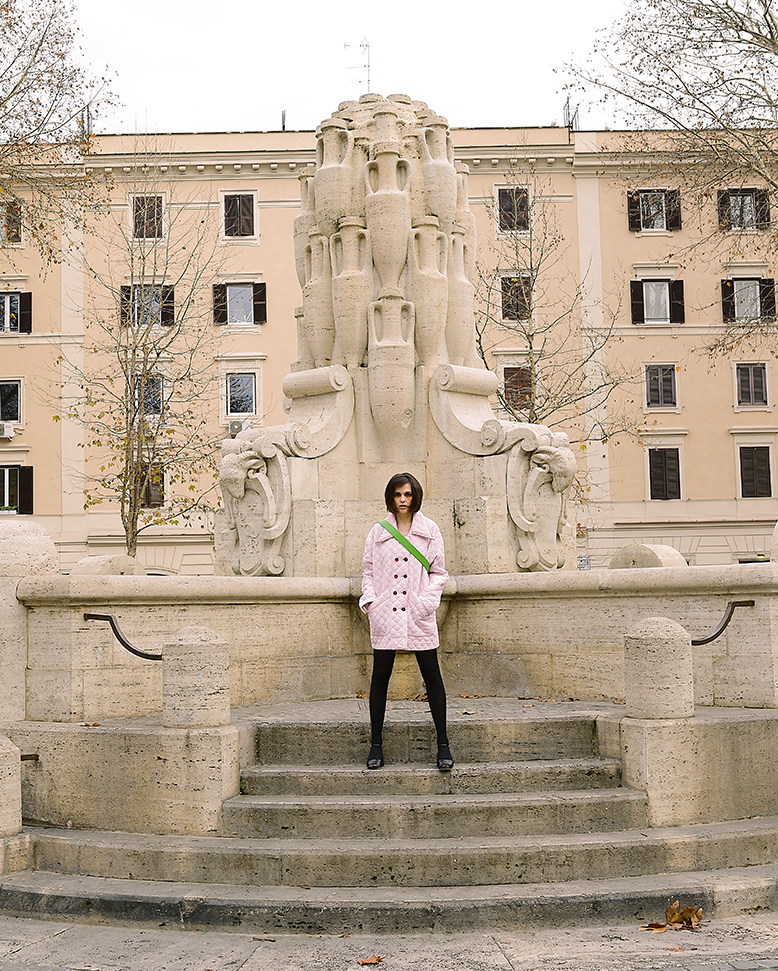
Quilted jacket in technical cotton, “baguette” bag in FF embossed leather – Fendi
Piazza Testaccio, Fontana Delle Anfore, Roma, after Accatone by Pier Paolo Pasolini (1961)
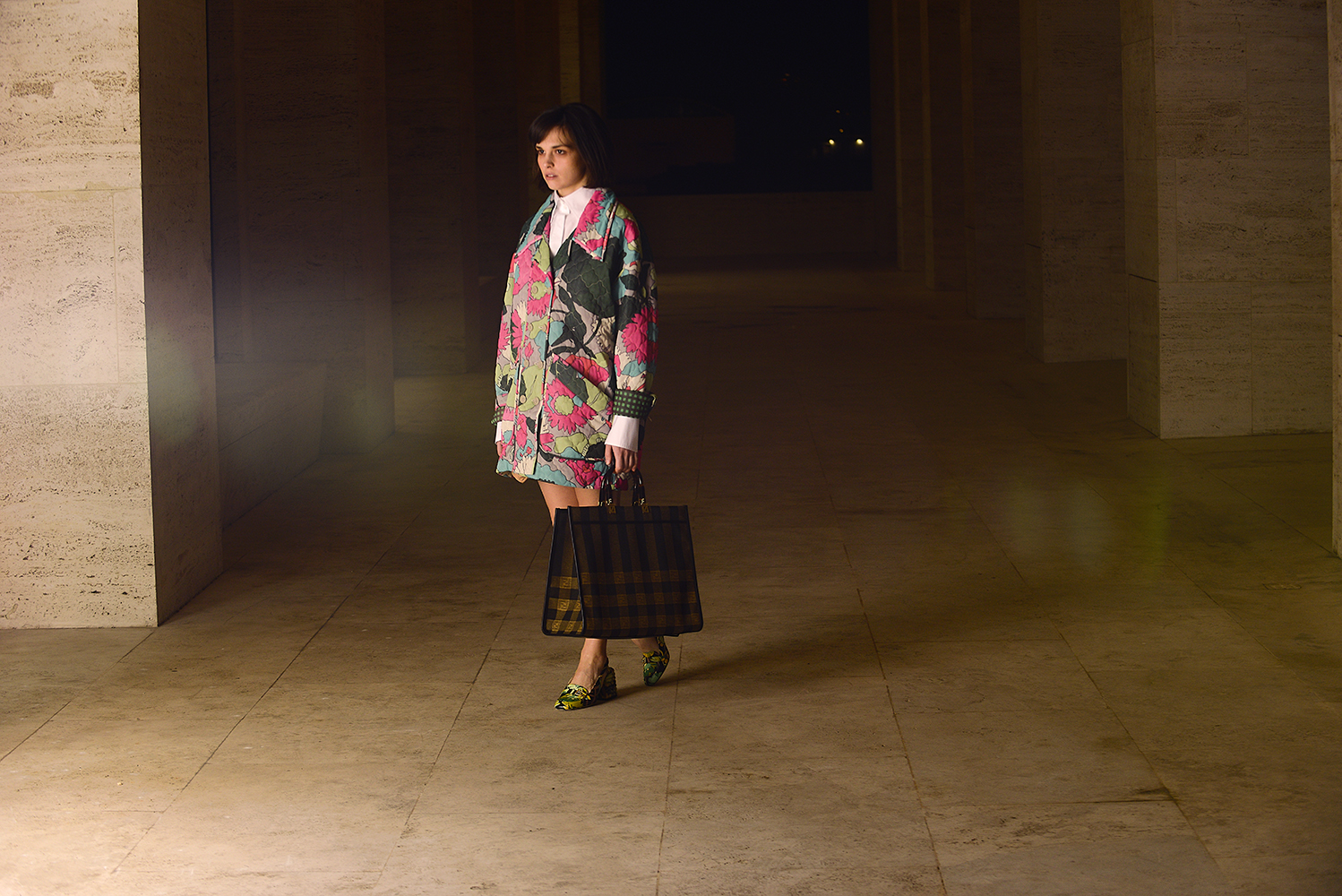
Cotton shirt, quilted jacket in technical cotton with floral print, “Pequin” canvas bag, printed flowers mocassins with heels – Fendi
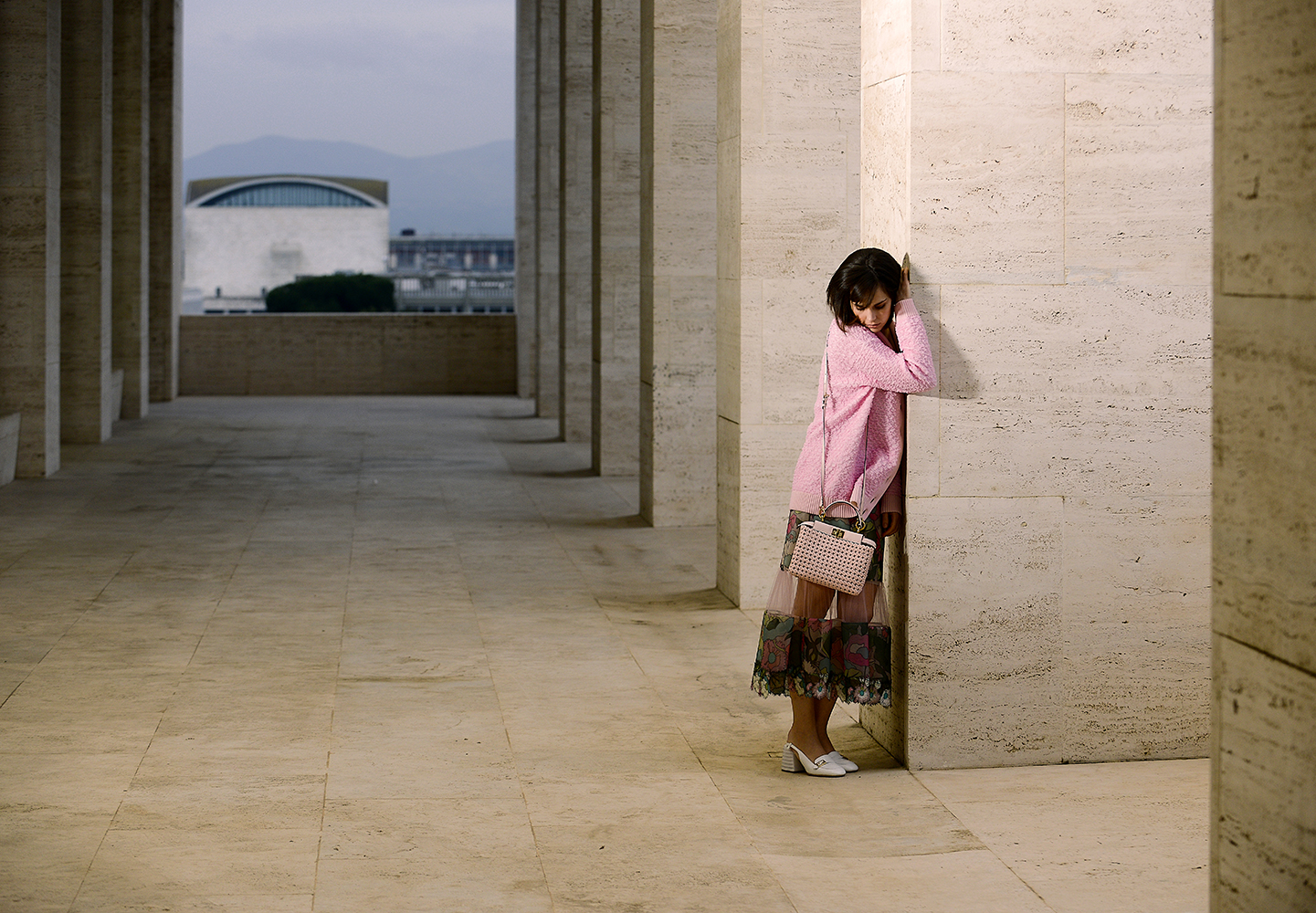
Quilted cardigan in technical cotton, long dress in tulle and organza with floral print, “Peekaboo” pink leather bag, mocassins with heels – Fendi
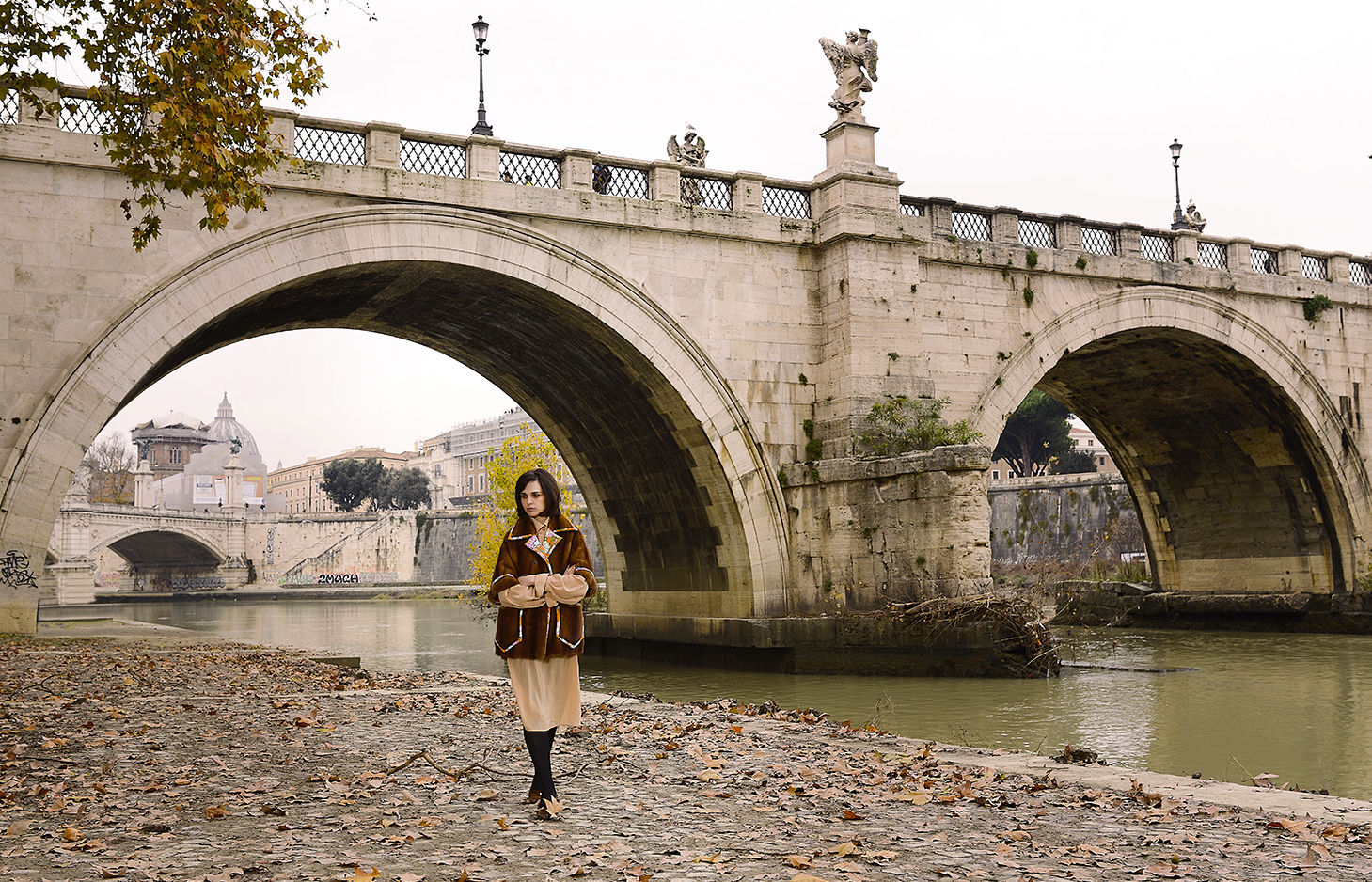
Mink and floral-print cotton edges short-sleeved jacket, silk dress – Fendi
Ponte San’ Angelo, Roma after Accatone by Pier Paolo Pasolini (1961)
***
Photographer: Frank Perrin
Stylist: Armelle Leturcq






